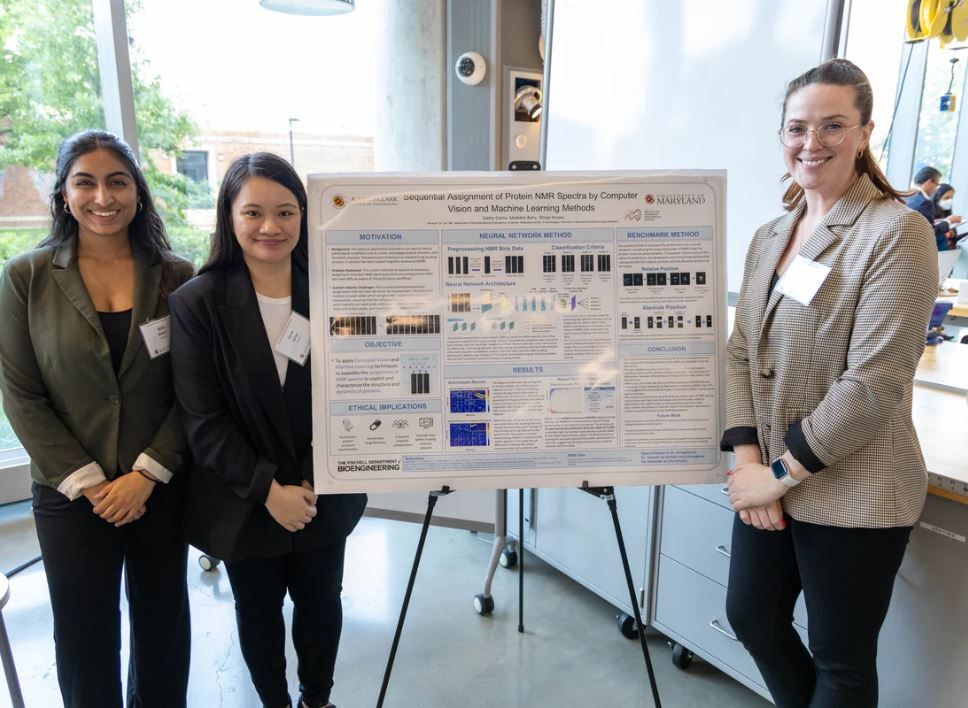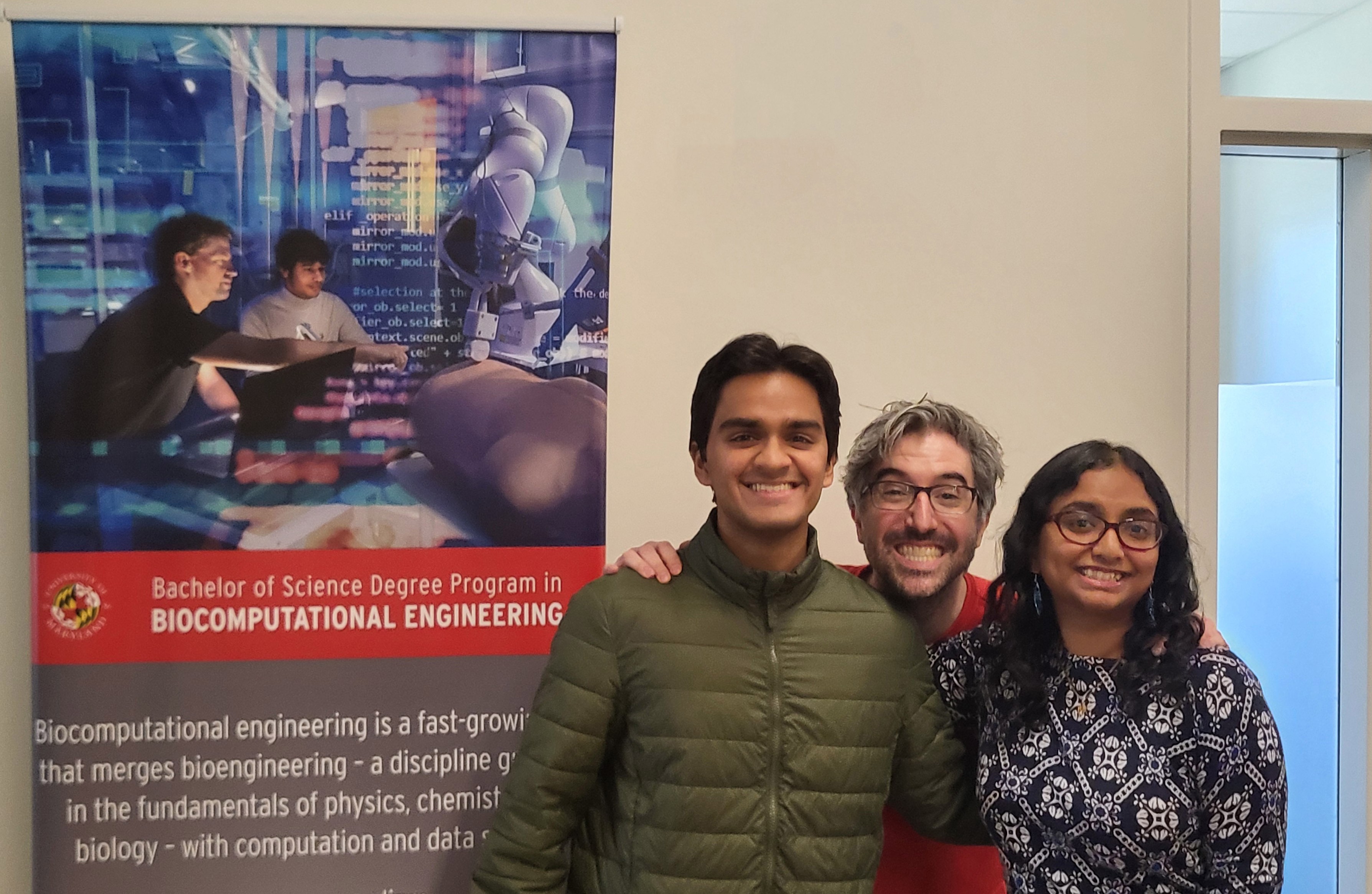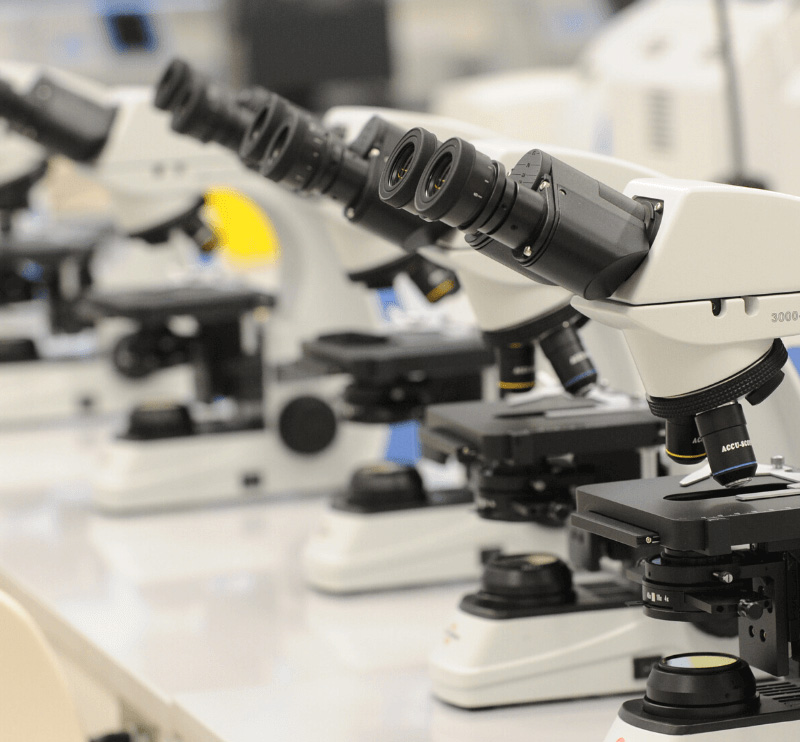UMD Biocomputational Engineering Students Showcase Innovative Designs at Capstone Competition
August 30, 2023
This past May, the University of Maryland (UMD) Fischell Department of Bioengineering (BIOE) hosted its 17th annual Capstone Design Competition. This year’s competition saw the first-ever teams from the UMD’s Biocomputational Engineering (BCE) Program.
Housed at the Universities at Shady Grove and launched in 2021, the recently established BCE program is designed to address the growing need for engineers who have a solid foundation in both the physical and biological sciences as well as computation and data science. With the advancement of AI, data analytics, and computer science, BCE has become an essential field to solve complex biological and medical problems and now sits at the forefront of innovation in healthcare. From developing new treatments for diseases to designing tools for genetic engineering, the field is constantly evolving. Students pursuing BCE have positioned themselves at the heart of the growing biotech industry.
Teams 23 and 24 were made up of the first seven BCE students to compete in the capstone competition, five of whom were the program’s first graduates this spring commencement. Both teams undertook challenging bio-data science projects, resulting in designs and research that will leave a lasting impact and continue beyond this competition.
Team 23’s design project, “Sequential Assignment of Protein and NMR Spectra by Computer Vision and Machine Learning Methods,” sought to create a prototype that accelerates the process of protein structure characterization using computer vision and machine learning techniques. Understanding protein structure and function can aid drug discovery efforts and is a process that has been bottlenecked by traditional methods. As the students explain in their project abstract, “Researchers who have access to the necessary computational resources and expertise may be more likely to benefit from this technology, while those who do not may be left behind.”
The students of Team 23 will continue to work with their mentor Dr. Frank Gelaglio from the Institute for Bioscience & Biotechnology Research (IBBR). Dr. Gelaglio says, “The results from the capstone project are novel and better than expected, so we're investigating the possibility of publishing them with the BCE students as leading authors.”
Team 24’s project, “Particle Characterization using Fluidic Imaging,” addresses the need for an automated blood cell classification tool that works on fluidic imaging data. White blood cell classification is a significant research topic in the field of hematology. As the students explain in their project’s abstract, “Being able to accurately determine the concentrations of different types of white blood cells in a sample provides medical professionals valuable insight into possible diseases and risk factors.”
The team—sponsored by manufacturing company Beckman Coulter and mentored by Rigoberto Roche, Chief Architect of Artificial Intelligence at Beckman Coulter—may see its algorithms incorporated into the company’s pipeline of cell pre-training procedures, which is a completely novel project in healthcare.
“Thanks to Mr. Roche’s and Dr. Delaglio’s mentorship, both capstone teams were able to embark on challenging, real-world bio-data science problems. They deployed multi-disciplinary skills gained from the BCE curriculum, spanning linear algebra, artificial intelligence, image processing, programming for large-scale data analysis, and more to deliver advanced biocomputational solutions within one semester,” explain Dr. Lan Ma, Assistant Director of Biocomputational Engineering. “Starting from conceiving initial project ideas till accomplishing the promising results, they worked hard and collaboratively to overcome various technical difficulties encountered during project implementation, making the senior design project a valuable student-driven learning experience.”
See below to read the full abstracts for these two BCE teams.
Team 23: Sequential Assignment of Protein and NMR Spectra by Computer Vision and Machine Learning Methods
Students: Madeline Barry, Carina Carino, Shriya Koneru
Advisors: Dr. Lan Ma (BCE) and Dr. Frank Delaglio (IBBR)
Recent research has shown that understanding protein structure and function can aid drug discovery efforts and enable the design of novel proteins with specific properties for various applications. Nuclear magnetic resonance has become the preeminent technique to study proteins and their dynamic interactions. The traditional methods of characterizing protein structures through NMR spectroscopy has led to a bottleneck in the drug discovery pipeline and has hindered progress in understanding protein function and interaction. Our proposed prototype aims to accelerate the process using computer vision and machine learning techniques. The prototype is a neural network that analyzes spectral graphics of unassigned amino acids, determining whether they are adjacent to each other in the protein sequence and where they are located in the overall protein sequence. In order to test the performance of our prototype, a combinatorial optimization technique was used to maximize the comparison score from the relative and absolute position. Therefore, the score of a successful model would outperform the score of the manual sequential alignment. Once trained, the proposed prototype could significantly benefit researchers and scientists in this field by automating the process of assigning NMR spectra, enabling faster and more accurate characterization of protein structures. This, in turn, could lead to the discovery of new therapeutic targets and the development of novel proteins for various applications. However, it is important to note that the impact of this technology may not be evenly distributed across the scientific community. Researchers who have access to the necessary computational resources and expertise may be more likely to benefit from this technology, while those who do not may be left behind. Additionally, the potential for bias in automated sequential assignment neural networks must be considered, as it could lead to discriminatory or misidentified outcomes. By taking a proactive approach to addressing these issues, we can ensure that the benefits of this technology are maximized while minimizing potential negative impacts. The use of machine learning and artificial intelligence in scientific research has the potential to transform the way research is conducted, enabling new discoveries and breakthroughs that were previously impossible. This could have far-reaching implications for fields beyond structural biology and drug discovery, including materials science, engineering, and environmental science.
Team 24: Particle Characterization using Fluidic Imaging
Students: Melina Khansari, Patrick Tallon, Ryan Trask, Nicolle Vigil
Advisors: Dr. Lan Ma (BCE) and Rigoberto Roche (Beckman Coulter)
The classification of white blood cells is a significant topic of research in the field of hematology. Being able to accurately determine the concentrations of different types of white blood cells in a sample provides medical professionals valuable insight into possible diseases and risk factors. A number of artificial intelligence approaches designed to automate the classification process have been proposed in literature. However, all of these approaches are designed to work with microscopy images. Microscopy images distort the physical dimensions of the cells, casting doubt on how accurately they represent cells in vivo. There is a need for an automated blood cell classification tool that works on fluidic imaging data. This project proposes a method for automatic white blood cell classification designed for use on real-time fluidics images acquired from samples in solution. A novel convolutional neural network architecture was designed in TensorFlow. The model architecture was expanded based on a minimal working model. A number of regularization methods were implemented to improve the robustness of the network. The network was trained on a set of ~40,000 sample images per class. Input data was augmented to be robust against rotational and translational variance. The neural network was deployed in an Oracle Virtual Machine and evaluated for accuracy and speed. The model produced an overall classification accuracy of ~90%. Faster and more accurate classification of white blood cells can aid in the early detection and treatment of diseases, such as infections, leukemia, and autoimmune disorders. Research and development in this field can also advance our understanding of the immune system and contribute to the development of new therapies and treatments.









